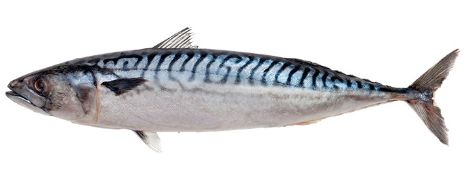Australian fish counters carry three mackerel that often get mixed up: Spanish, spotted, and blue. Each fish brings a different size range, flavour, and best-use in the kitchen. Learn to tell them apart at a glance, choose the right cut, and cook with confidence. If you’re scanning listings for mackerel for sale, this guide will help you buy well and serve it at its peak.
Identification that sticks
Spanish mackerel (Scomberomorus commerson) are long, torpedo-shaped, and built for speed. The giveaway is the pattern: broken, wavy bars along silver flanks rather than dots. They grow big. Whole fish from northern waters commonly weigh several kilos, so you will often see steaks and cutlets rather than small whole fish.
Spotted mackerel (Scomberomorus munroi) carry neat round spots down the sides and lack the bold bars of a Spanish. They run smaller and slimmer, which makes them handy for quick filleting and fast grill work.
Blue mackerel (Scomber australasicus) are shorter, with a darker, green-blue back and finer body. They come in smaller whole sizes and have oil-rich flesh that works well with smoke, pickles, and punchy sauces.
Quick comparison
| Species | Key ID Feature | Typical Market Size | Flavour & Texture | Best Uses |
|---|---|---|---|---|
| Spanish | Wavy bars, long body | Large steaks and cutlets | Firm, rich, clean finish | BBQ steaks, sashimi-grade cuts, curries |
| Spotted | Round spots along flanks | Small to medium whole fish | Medium oil, slightly milder | Fast grilling, pan-frying, tacos |
| Blue | Compact, dark back, fine scales | Small whole fish | Oily, soft flakes, robust | Smoking, escabeche, miso broil |
Buying cues
Freshness shows in the eyes, gills, and skin. Look for clear eyes, bright red gills, tight scales, and a natural sea scent. Flesh should spring back when pressed. For steaks and cutlets, check for moist, glossy surfaces without browning at the edges. Ask your fishmonger to pin-bone fillets if you prefer quick weeknight cooking. When you’re cross-shopping online and see other items like lobster tail raw, remember that mackerel takes heat differently, so plan your cooking times separately.
Spanish mackerel: bold flavour, broad cooking range
Spanish mackerel offers firm, meaty slices with a clean, rich taste. It holds shape on a hot grill and stands up to spice rubs and marinades. Score the skin lightly to stop curling, salt early, then cook skin-side down until crisp before a short finish on the flesh side. Cutlets braise well in coconut-based curries and tomato stews, where the collagen in the bone adds body. If you prefer a raw preparation, ask for sashimi-grade portions and keep them tightly chilled from shop to plate.
Many shoppers type Mackerel for sale near me before the weekend. Good retailers list catch area, handling date, and cut options, which makes it easy to order the right thickness for your pan or barbecue.
Spotted mackerel: quick to cook, easy to portion
Spotted mackerel tastes a touch milder than Spanish and cooks in less time. Whole fish around a kilo fillet neatly into two even sides that take salt and lemon well. For crisp skin, pat the fillets dry, score two or three shallow lines, and use a hot, lightly oiled pan. Turn once. If you want a brighter flavour, try a light miso glaze or a lime and herb butter. Because the fish is slimmer, avoid heavy marinades that mask the natural taste.
You may notice people writing fresh mackeral in search bars. Spelling aside, the goal is the same: firm fillets, bright colour, and clear aroma that points to a recent catch and careful handling.
Blue mackerel: small fish, big character
Blue mackerel brings higher oil content and softer flakes, which suits smoking, pickling, and bold sauces. Brine fillets briefly, dry them to form a tacky surface, then smoke over a gentle wood until just set. For a quick midweek dinner, try a miso broil or grill the fillets and finish with vinegar and shallots Spanish-style. The fish also shines in escabeche, where a warm vinegar marinade firms the flesh and adds shelf life in the fridge.
If you are building a shared table, smoked blue mackerel sits nicely next to prawns, oysters, and salads. Retailers that stock a broad seafood range often include seasonal items and list Fresh mackerel for sale clearly on product pages so you can plan quantities.
Cuts, bones, and yield
Cutlets include the backbone and cook evenly on the grill. Steaks are cross-sections with skin that crisp up well. Fillets give you speed and less waste on the plate but require pin-boning. Spanish yields the most per fish; blue yields less but brings strong flavour that carries through salads and toasts. Trim dark bloodlines only if you want a milder taste; leaving some can deepen the flavour in grilled dishes.
Storage and food safety
Keep mackerel at 0 to 5°C in the coldest part of the fridge. If you buy whole fish, store it on a tray of ice with a rack so meltwater can drain. Eat within two days for the best texture, or freeze promptly in well-wrapped portions with the air pressed out. Thaw in the fridge, not on the bench. These steps preserve the natural oils that make the fish so satisfying.
If you are shopping online and building a mixed order, many stores that list mackerel also offer lobster tail raw online for a separate course. Keep cooking plans distinct so each item gets the right timing.
The final choice
Pick Spanish when you want thick steaks and a bold centrepiece. Choose spotted for fast grilling and a lighter touch. Reach for blue when you plan to smoke, pickle, or pair with assertive sauces. For supply, cut options, and daily freshness on the Gold Coast, look for clear product notes and consistent handling standards.

